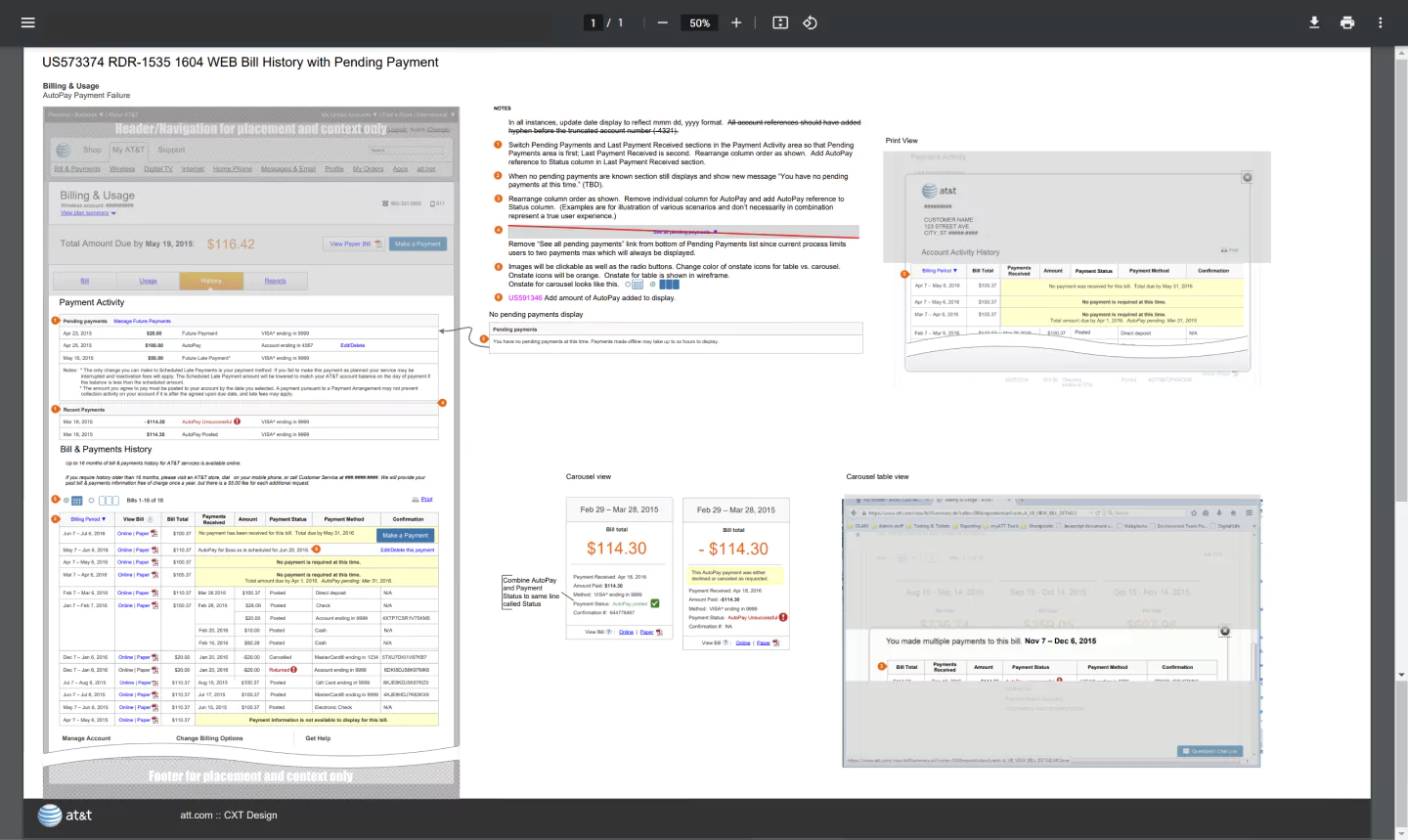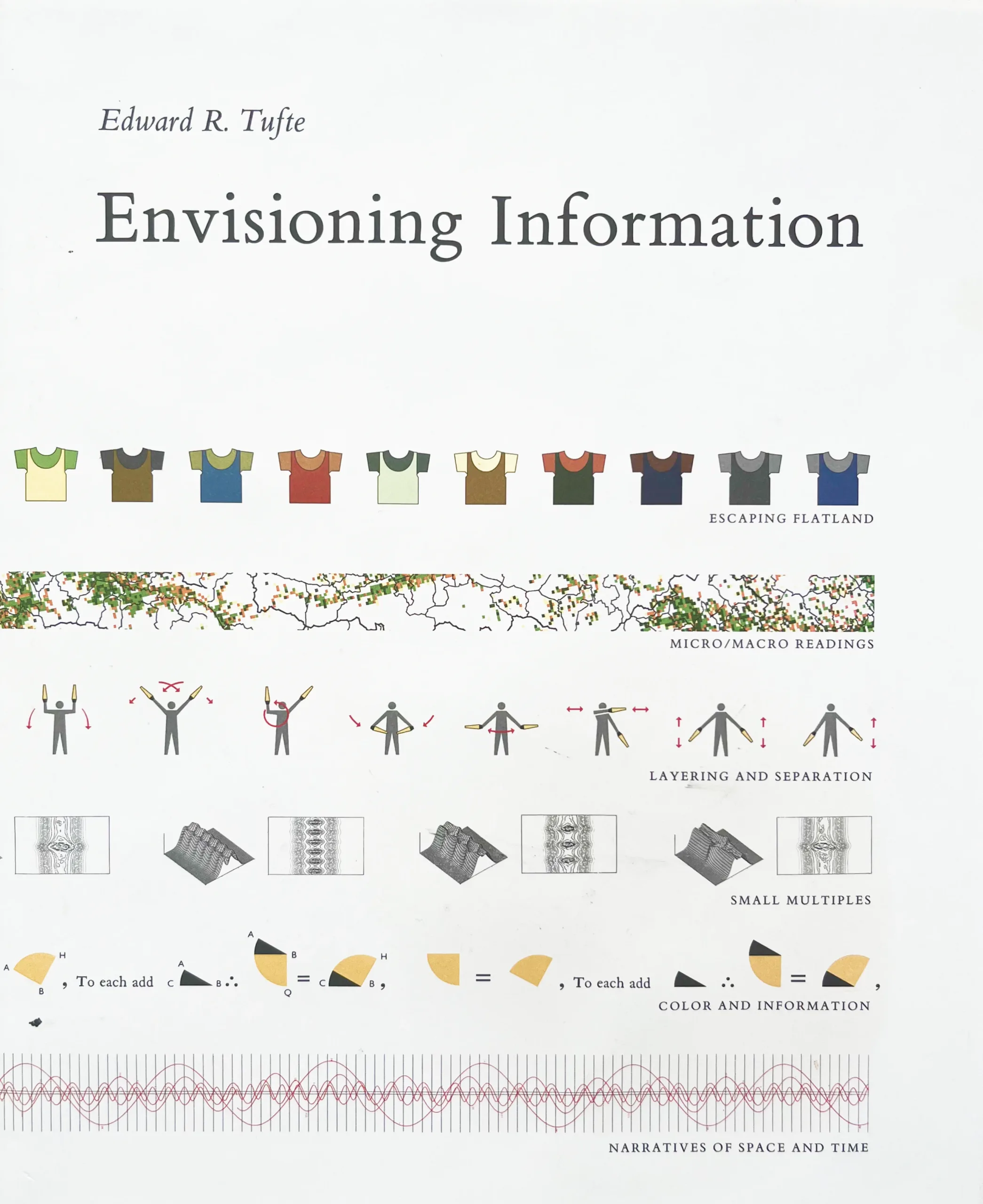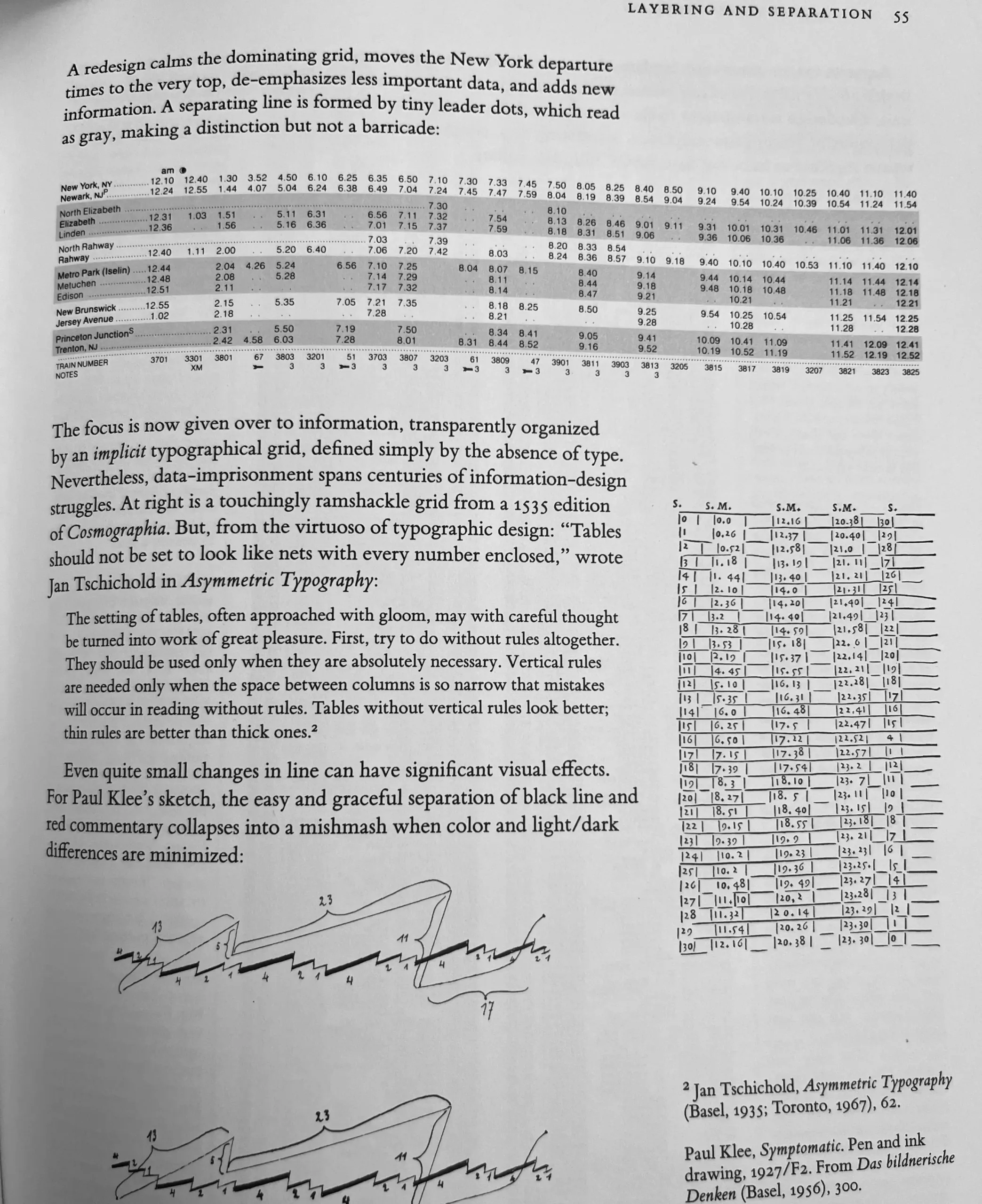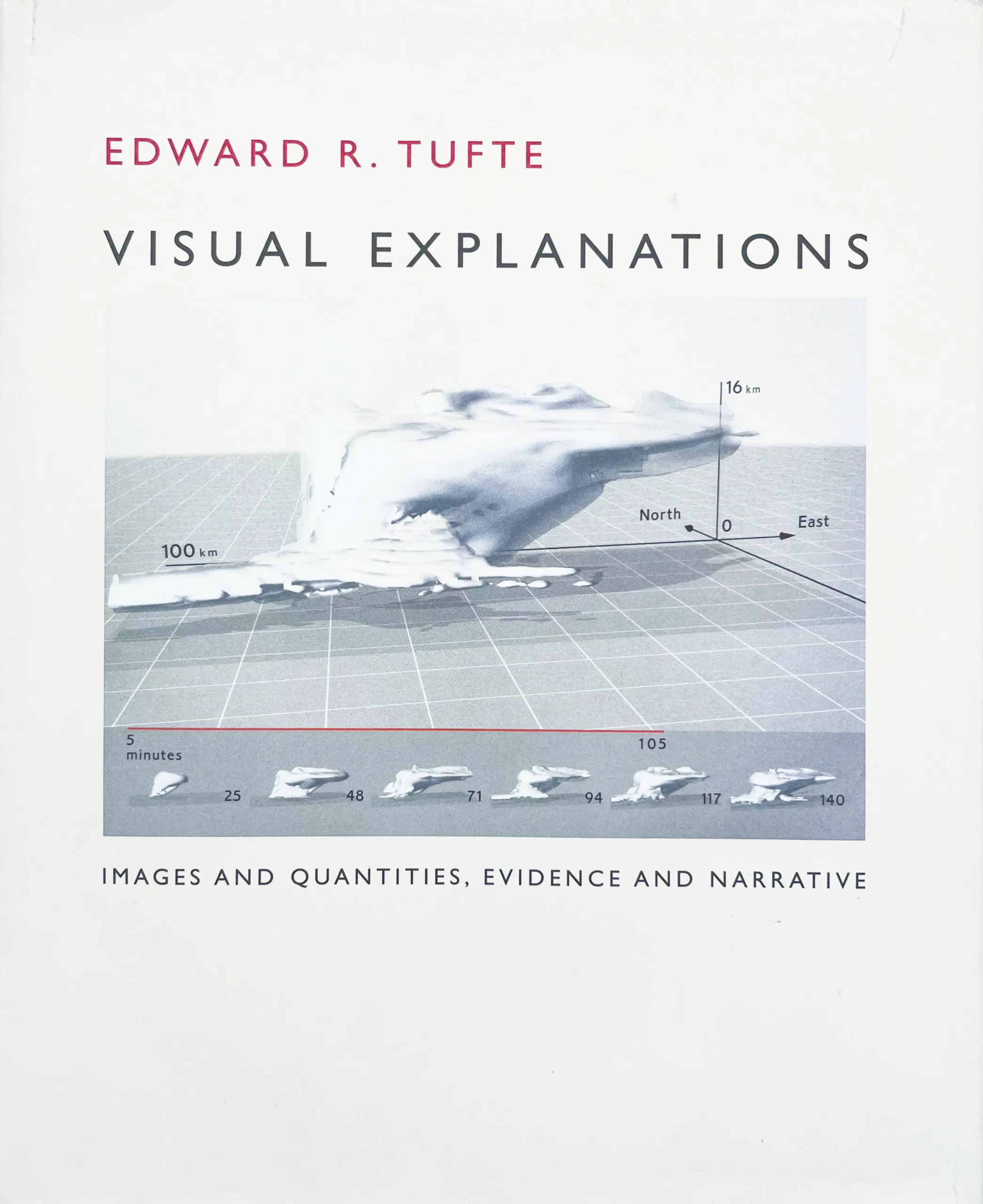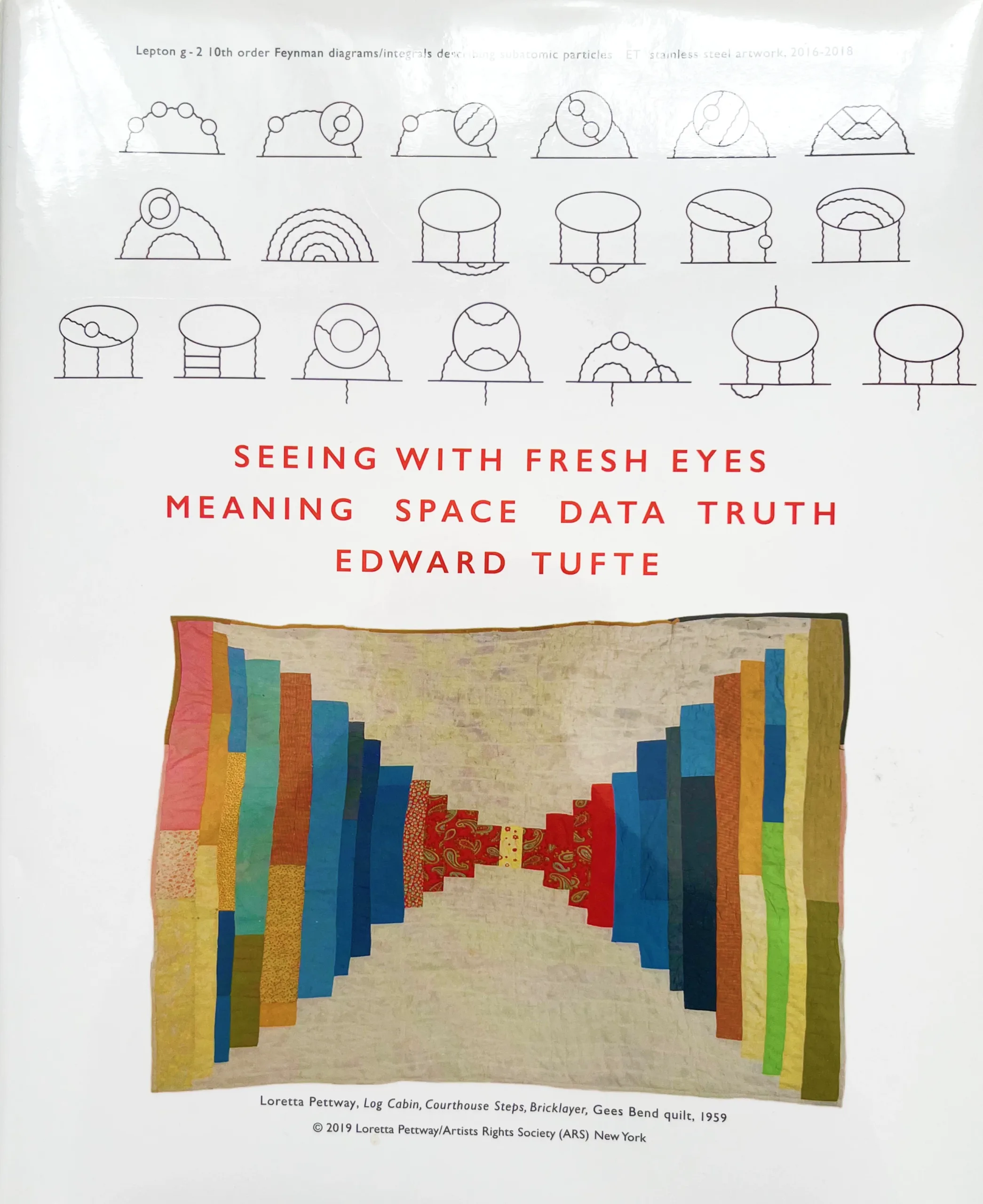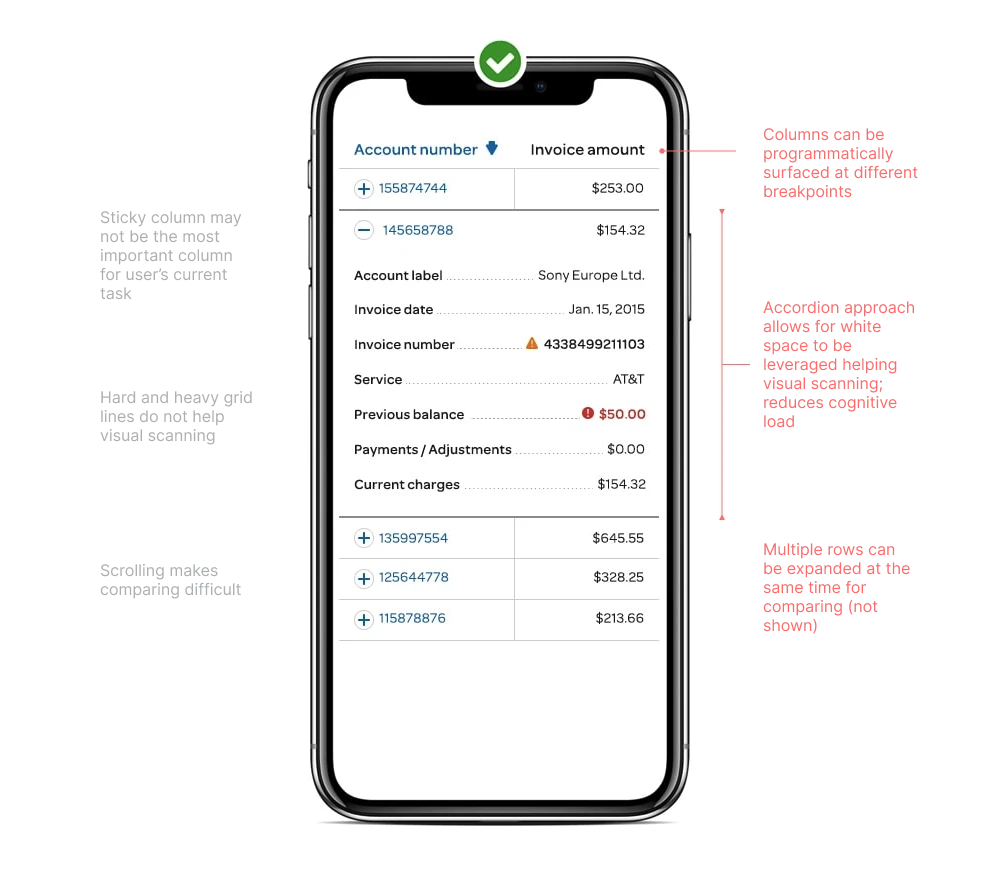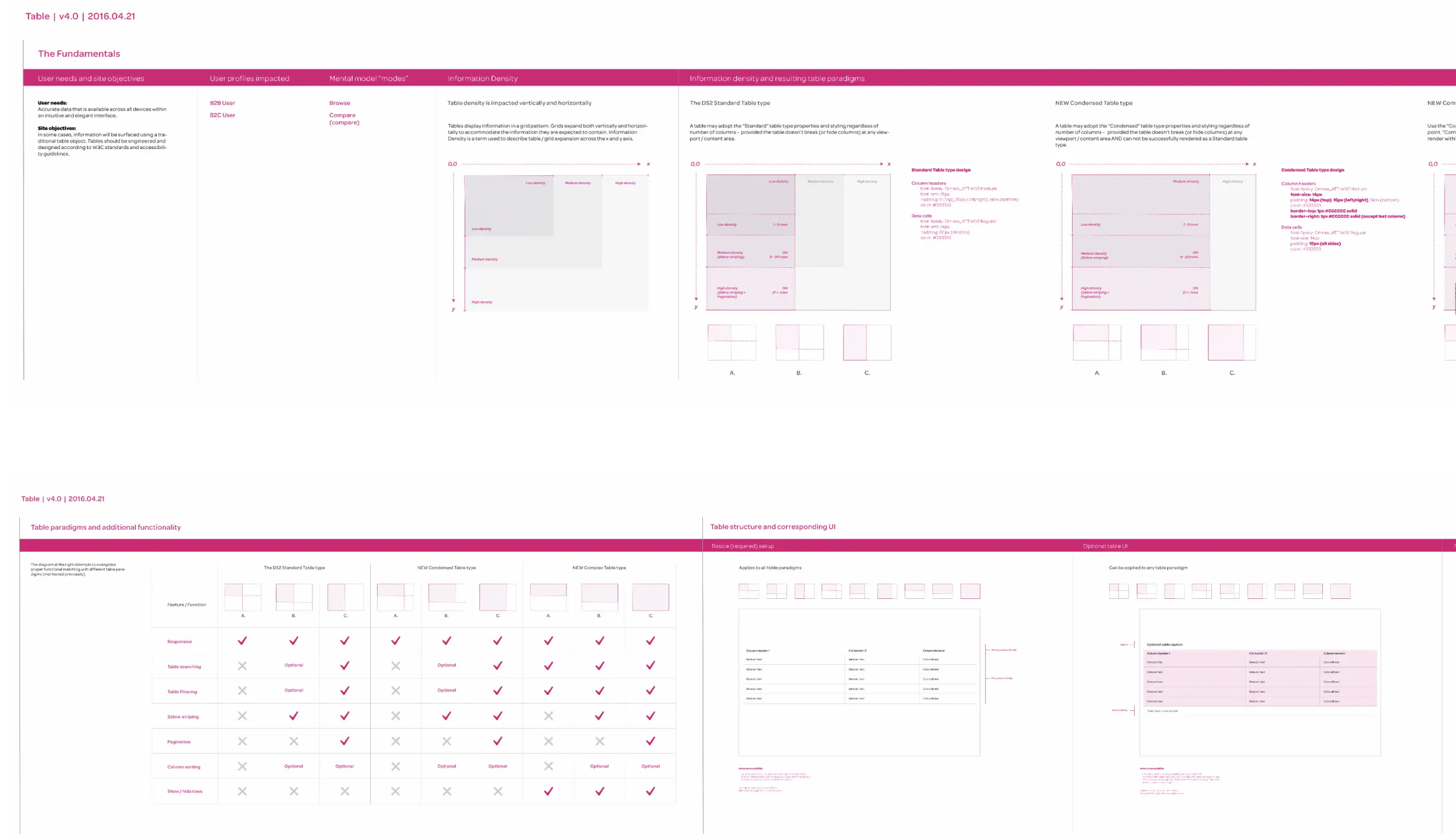
Delivered
Enterprise Design Standards
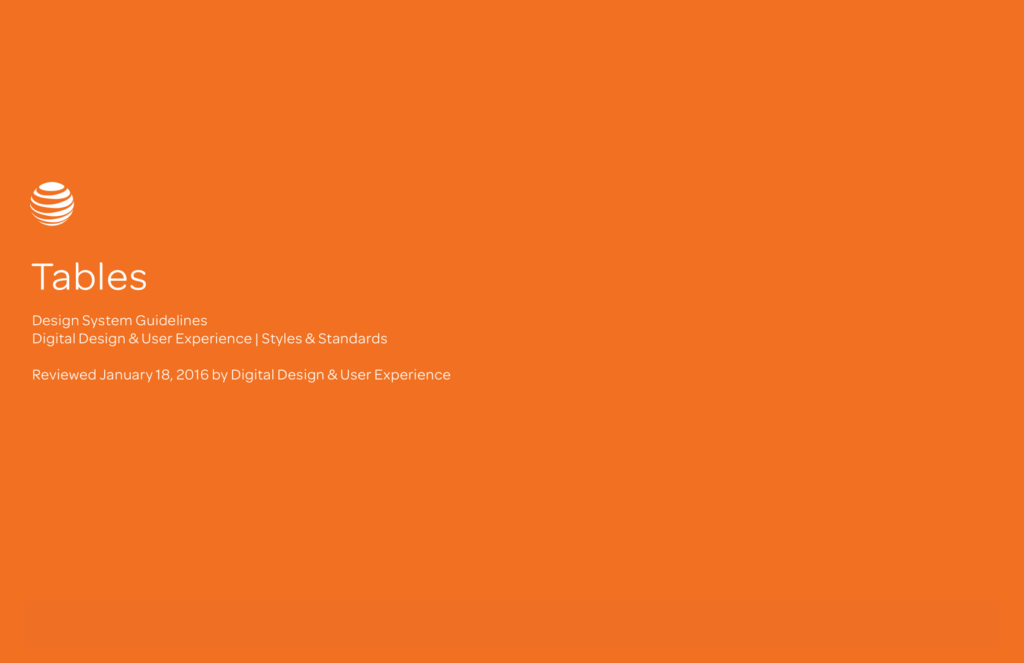
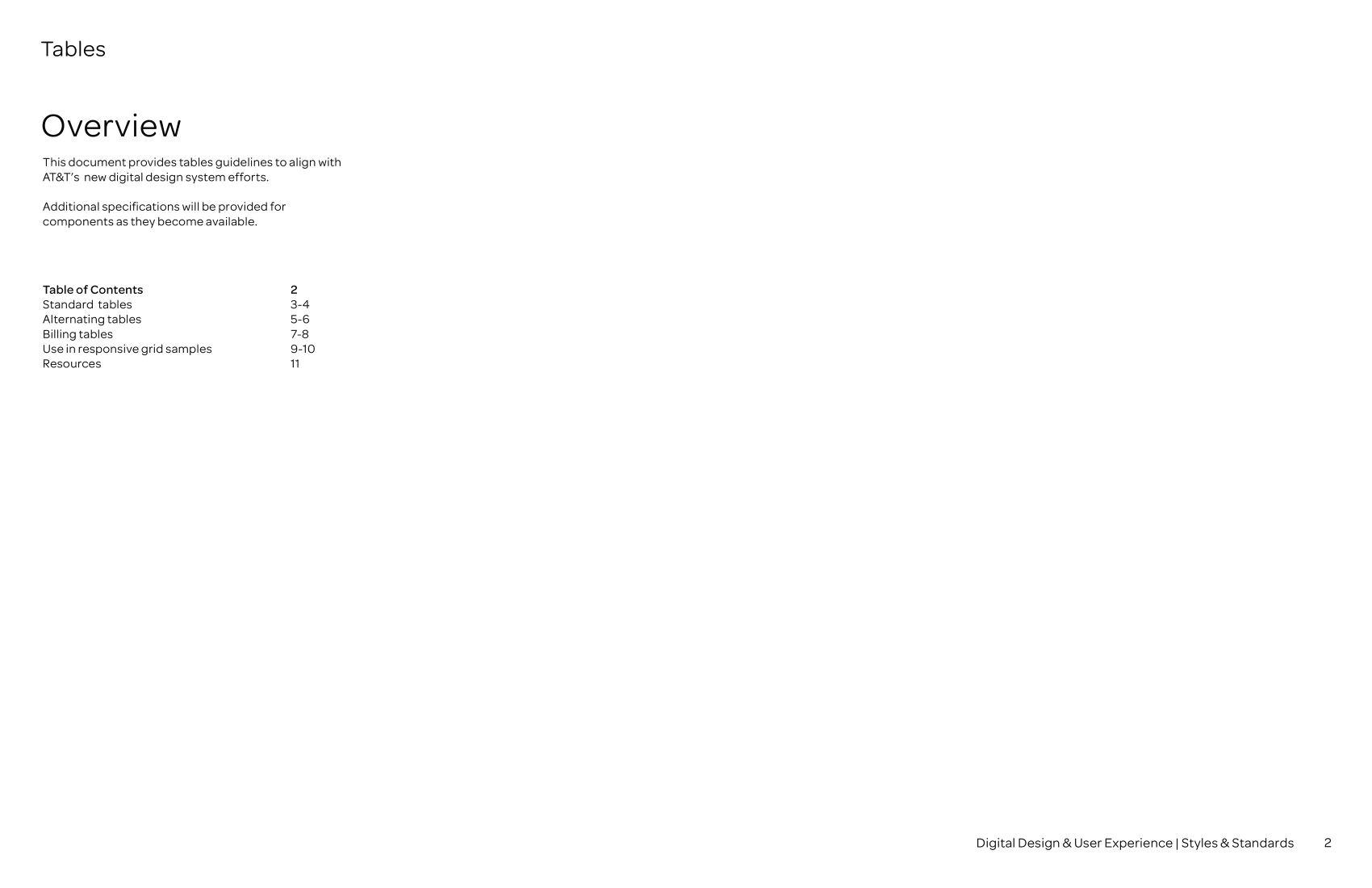
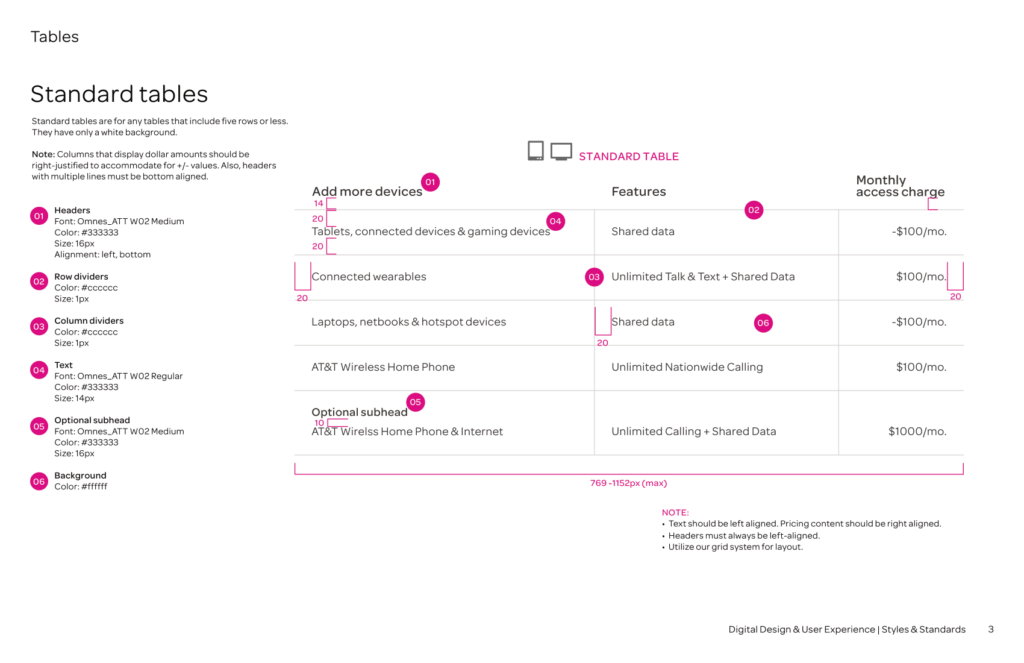
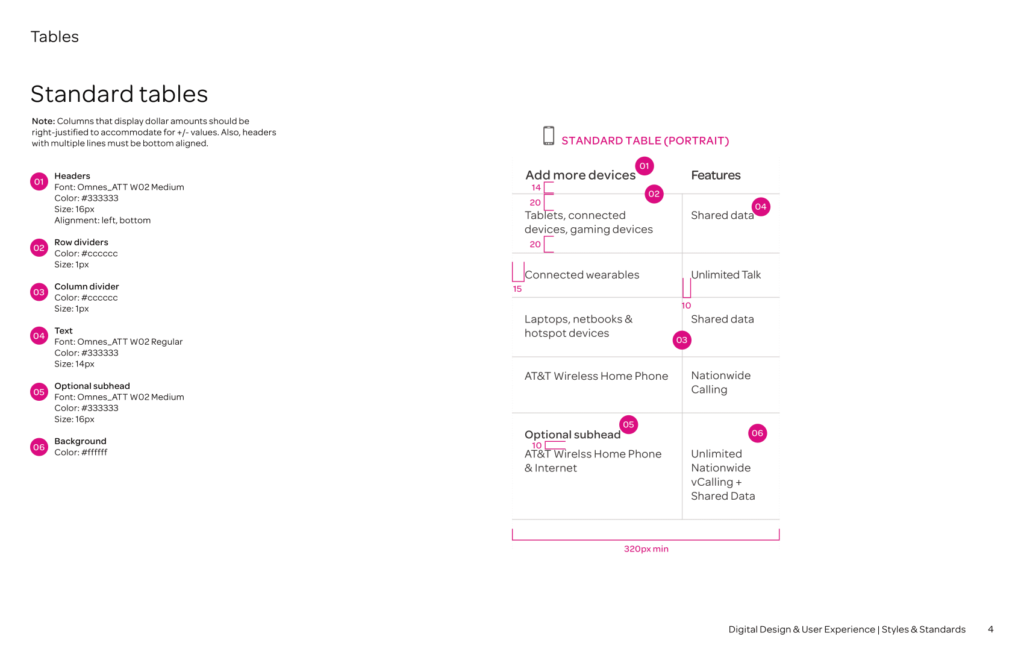
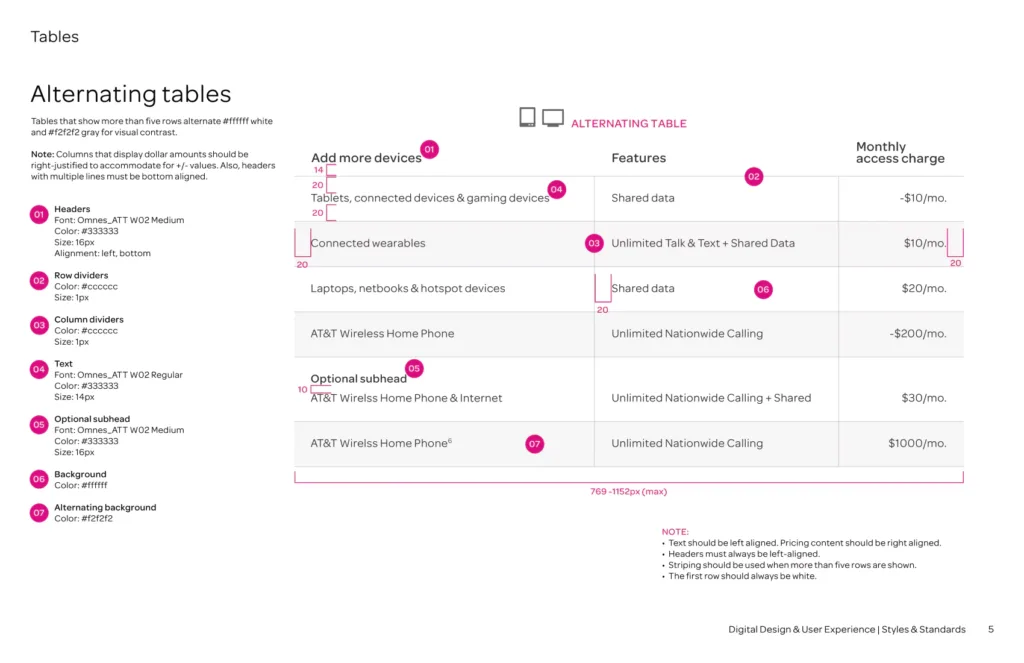
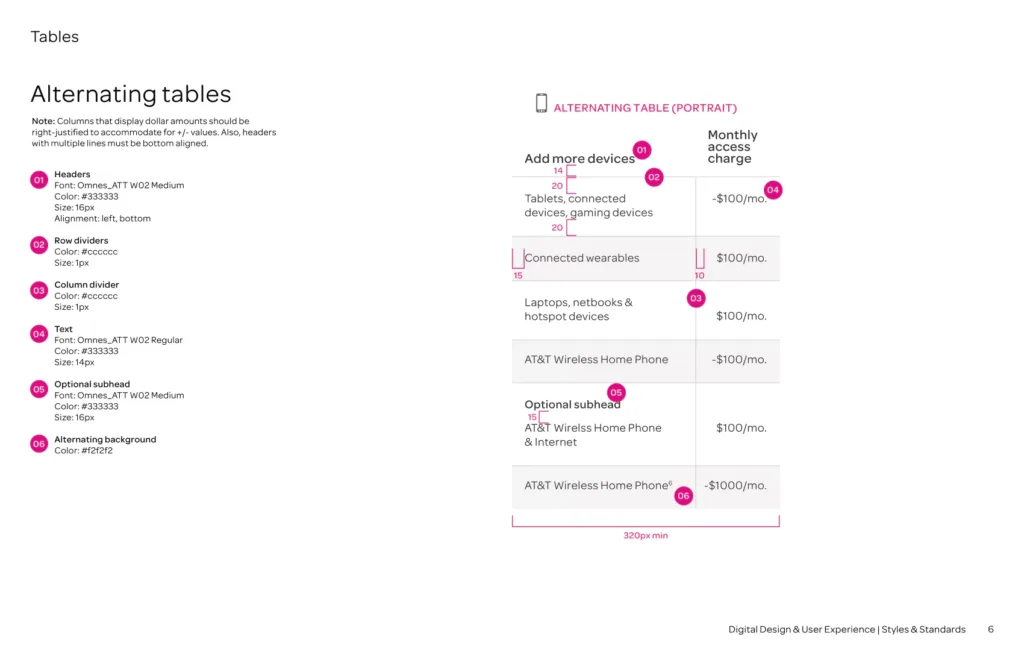
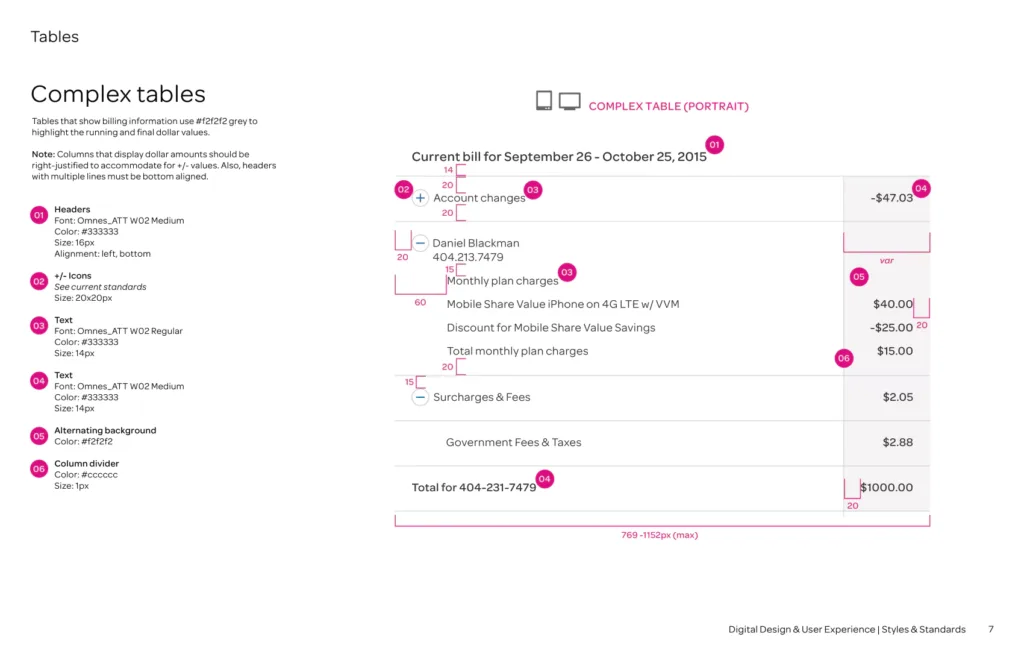
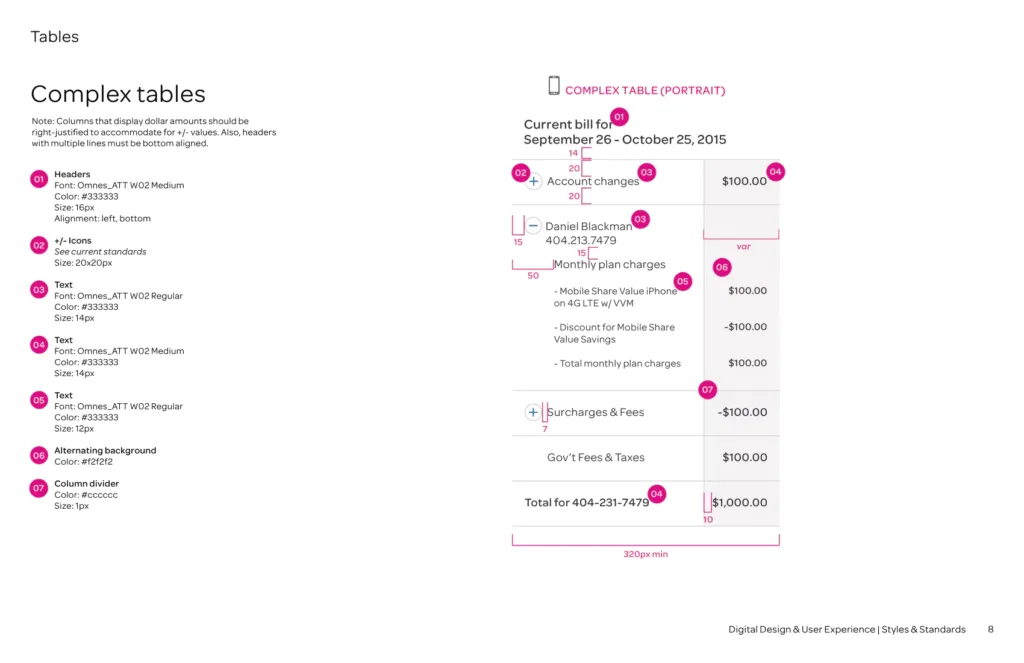
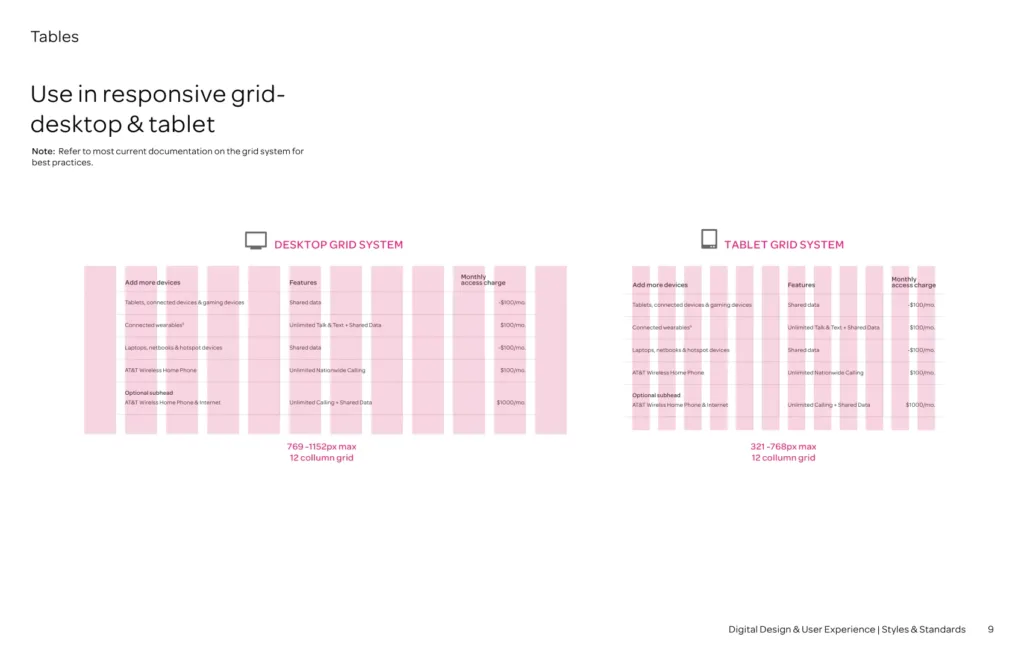
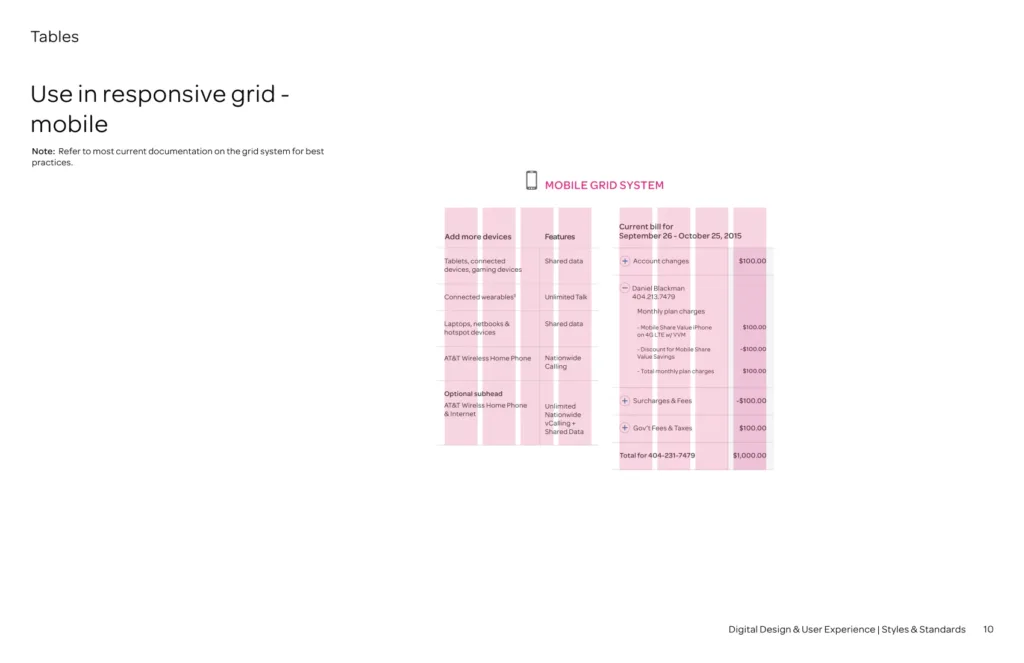


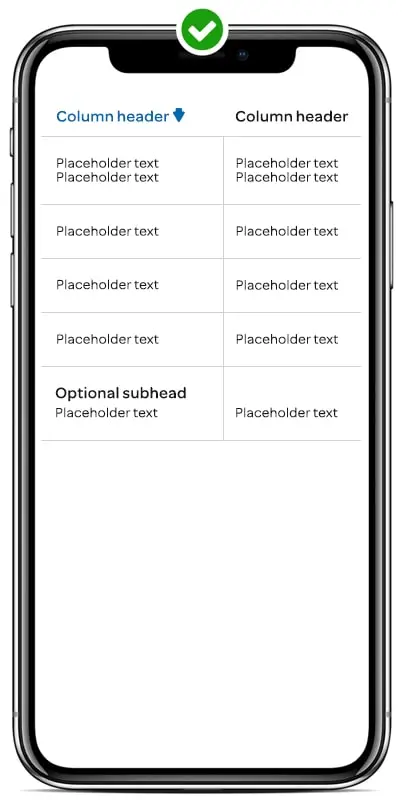
This work was part of AT&T’s DS2 enterprise design standards initiative. The DS2 effort involved the reimagining everything from typography to atomic UI patterns and mashups across the board.
A basic table pattern had already been designed prior to my involvement but was incomplete.
My challenge was to conduct a deep dive audit across B2B and B2C experiences and propose additional visual and interactive designs and responsive architecture solutions that addressed user pain points and expectations to complete this pattern’s specification.
The stakeholder elected to take an Unintentional / Activity Design approach. I relied on the feedback and input from 2 internal B2B customer support agents and a member from the B2B Accounts Receivables team.
After several rounds of iterations, I was able to provide both interactive and visual design standards that were adopted into AT&T’s next generation DS2 enterprise design system and used as a source of truth. My table design work helped reduce B2B accounting errors and decreased time-on-task for several key, repetitive internal B2B accounting workflows.
